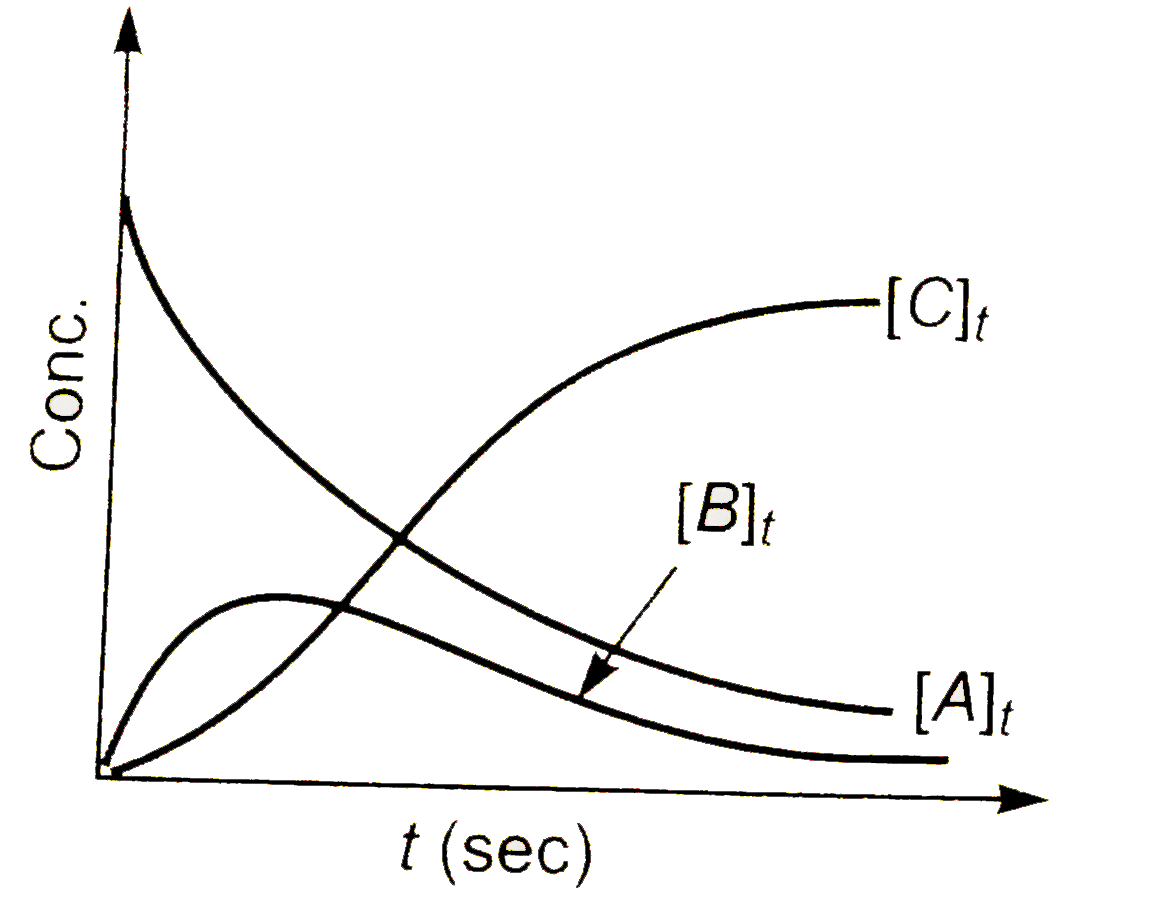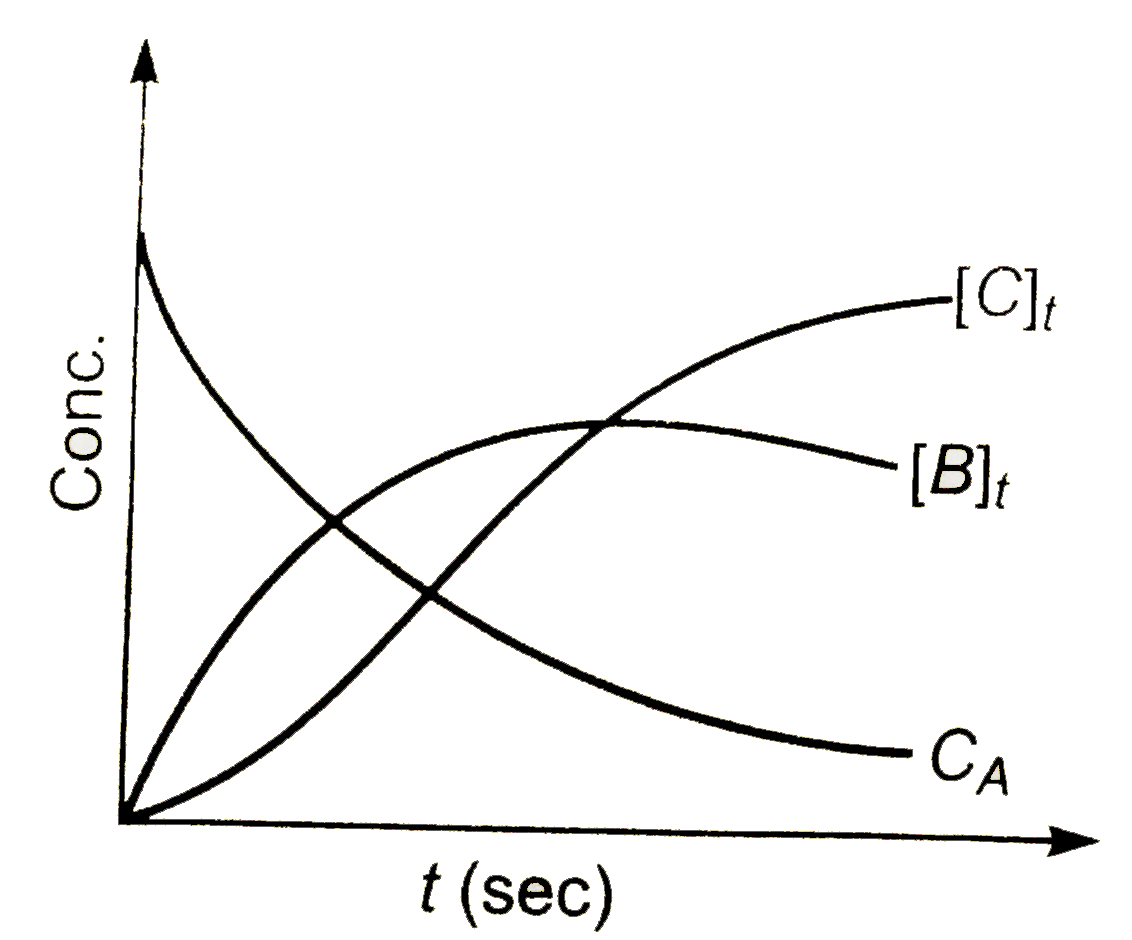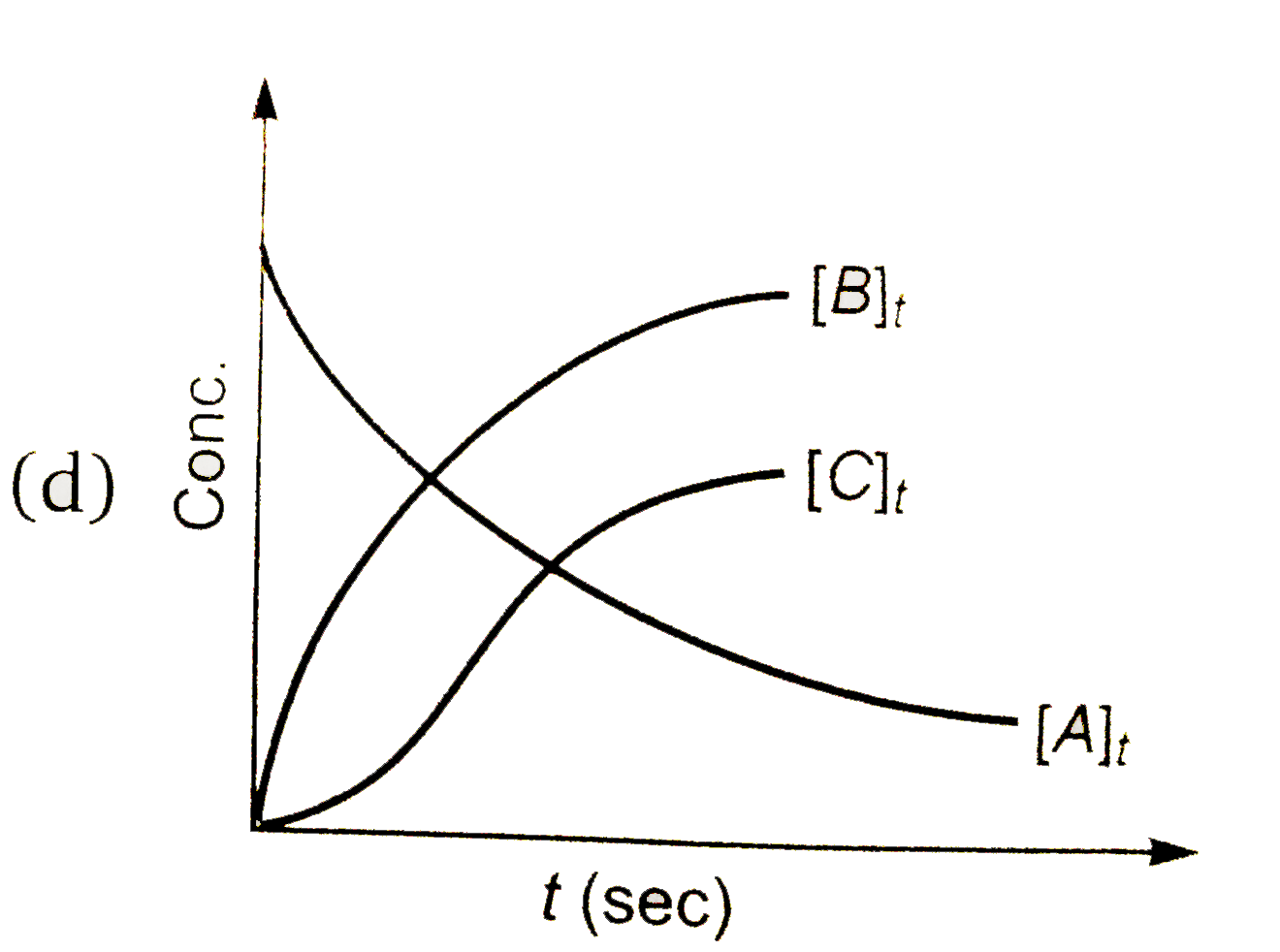Two consecutive irreversible fierst order reactions can be represented by
Ak1−−→Bk2−−→C
The rate equation for A is readily interated to obtain
[A]t=[A]0.e−k1t , and [B]t=k1[A]0k2−k1[e−kt1−e−kt2]
If k1 and k2 both are almost same then which graph is most suitable ?
graph A
graph B
graph C
graph D
The correct Answer is:A
Topper's Solved these Questions
- BOOK - NARENDRA AWASTHICHAPTER - CHEMICAL KINETIC & NUCLEAR CHEMISTRYEXERCISE - Level 3 - One Or More Answers Are Correct13videos
CHEMICAL KINETIC & NUCLEAR CHEMISTRY
- BOOK - NARENDRA AWASTHICHAPTER - CHEMICAL KINETIC & NUCLEAR CHEMISTRYEXERCISE - Level 3 - Assertion - Reason Type Questions3videos
CHEMICAL KINETIC & NUCLEAR CHEMISTRY
- BOOK - NARENDRA AWASTHICHAPTER - CHEMICAL KINETIC & NUCLEAR CHEMISTRYEXERCISE - Level 2 (Q.33 To Q.35)2videos
CHEMICAL KINETIC & NUCLEAR CHEMISTRY
- BOOK - NARENDRA AWASTHICHAPTER - SURFACE CHEMISTRYEXERCISE - Level 3 - Assertion - Reason Type Questions1videos
SURFACE CHEMISTRY
Similar Questions
In the series reaction
AK2−−→BK2−−→CK2−−→D , if K1>K2>K3 then the rate determing step of the reaction isView SolutionFor the two parallel reactions Ak1−−→BandAk2−−→C, show that the activation energy E' for the disappearance of A is given in terms of activation energies E1andE2 for the two paths by
E'=k1E1+k2K2k1+k2View Solution
Knowledge Check
- Question 1 - Select One
Two consecutive irreversible fierst order reactions can be represented by
Ak1−−→Bk2−−→C
The rate equation for A is readily interated to obtain
[A]t=[A]0.e−k1t , and [B]t=k1[A]0k2−k1[e−kt1−e−kt2]
When k1=1s−1 and k2=500s−1 , select most appropriate graphA B
B C
C D
D
- Question 2 - Select One
Two consecutive irreversible fierst order reactions can be represented by
Ak1−−→Bk2−−→C
The rate equation for A is readily interated to obtain
[A]t=[A]0.e−k1t , and [B]t=k1[A]0k2−k1[e−kt1−e−kt2]
Select the corret statement for given reaction:AA decreases linearlyBB rise to a max. and then constantCB rises to a max and the fallsDThe slowest rate of increases of C occuring where B is max - Question 3 - Select One
Two consecutive irreversible fierst order reactions can be represented by
Ak1−−→Bk2−−→C
The rate equation for A is readily interated to obtain
[A]t=[A]0.e−k1t , and [B]t=k1[A]0k2−k1[e−kt1−e−kt2]
At what time will B be present in maximum concentration ?AK1K2−K1B1k1−k2 In k1)k2C1k2−k1 In k1)k2Dnone of these
For the consecutive unimolecular-type first-order reaction Ak1−−→Rk2−−→S, the concentration of component R, CR at any time t is given by -
CR=COAK1[e−k1t(k2−k1)+e−k2t(k1−k2)]
if CA=CAO,CR=CRO=0 at t=0
The time at which the maximum concentration of R occurs is -View SolutionIn the series reaction
AK2−−→BK2−−→CK2−−→D , if K1>K2>K3 then the rate determing step of the reaction isView SolutionFrequently a species can react in different ways to give a variety of products For example toluene can be nitrated at the ortho meta or para positions we shall consider the simplest case, that of two competing irreversible first- order reactions:
Ak1−−→C and Ak2−−→D
where the stoichimetric coefficients are taken as unity for simplicity. THe rate law is
(d[A]dt)=−k1[A]−k2[A]=−(k1+k2)[A]
⇒[A]=[A]0e−(k1+k2)t
For C, we have (d[C]dt)=k1[A]=k1[A]0e−(k1+k2)t
Multiplication by dt and integration from time 0(where [C]0=0 to an arbitary time t gives
[C]=k1[A]0k1+k2(1−e−(k1+k2)t)
Similarly integration of (d[D]dt) gives
[D]=k2[A]0k1+k2(1−e−(k1+k2)t)
The sum of the rate constants k1+k2 appears in the exponentials for both [C] and [D] At any time, we also have, CD=k1k2
At high temperature, acetic acid decomposition into CO2 and CH4 and simultaneously into CH2CO (ketene) and H2O
(i) CH3COOHk1=3s−1→CH4+CO2
(ii) CH3COOHk2=4s−1→CH2CO+H2O
What is the fraction of acetic acid is reacting as per reaction(i)?View SolutionIn the following first order reactions (A)k1−−→product,(B)k2−−→product, the ratio k1/k2 if 90% of (A) has been reacted in time 't' while 99% of (B) has been reacted in time 2t is :
View SolutionFor the first-order reaction (C=C0e−kt1) and Tav=k−11. After two average lives concentration of the reactant is reduced to :
View Solution

